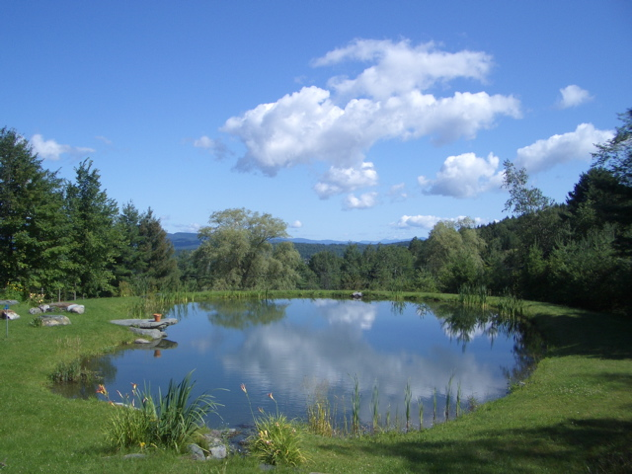The main goal of owning and maintaining a stock pond is to provide fishing for your family and other invited guests. In order to optimize the fishing experience, you will want your fish to be healthy, to grow well and to live in as close to a ‘natural’ environment as possible. This means that you must provide an ecosystem for your fish, complete with predator/prey interactions. It also means that you must make sure that your pond is well-aerated and oxygenated, has ample vegetation and is clear of invasive species and organisms that are detrimental to your pond.
The obvious stock choice for most pond owners is largemouth bass. Besides being excellent fish to catch and eat, they are also a great fish for maintaining the pond ecosystem. Largemouth bass are predators of very small aquatic animals (mostly too small for the naked eye to see) when they are young. As they grow, their preference for small fish also grows. Largemouth bass should be stocked at approximately 50 fish per acre if your pond is aerated, but 25 per acre if it is not.
Bass prefer fish such as bluegill or sunfish as their primary food. Because of this, Stocking your pond with these fish will allow your pond to be essentially self-sustaining, as long as you stock these fish in the correct initial ratio. Both bluegill and sunfish spawn more than once in the spring and summer, so the bass will have a constant source of food. Larger bluegill and sunfish are not prey for largemouth bass, so these fish will also grow enough to be catchable size. If your pond is aerated, you should stock approximately 800 bluegill and 200 sunfish per acre. If your pond is not aerated, 400 bluegill and 100 sunfish per acre is the appropriate ratio.
In order to happily maintain your bluegill and sunfish population, you will need to stock small feeder fish such as fathead minnows and golden shiners. These should be stocked in an aerated pond at a rate of five pounds per acre each. However, if your pond is not aerated, half of the aerated amount is appropriate. You do not want to overwhelm your pond’s ecosystem with too many small fish, although you will need to maintain a feeder fish population that will sustain your bluegills.
If you also love catfish, it is safe to stock channel catfish in your pond with the above fish. Make sure they are large enough that they will not become feeder fish for the bass when stocked. A maximum of 100 catfish per acre is plenty. If you want to maintain their population you will need to manually create areas for the catfish to spawn. If not, you can always restock periodically.
Some pond owners worry about vegetation overgrowth, especially since it is required for the health of the pond ecosystem to start with plenty of vegetation. If overgrowth is a problem, you can always invest in a few sterile grass carp. Make sure the grass carp you do stock are indeed sterile. They are otherwise known to be a very invasive species and can devastate your pond by over eating your vegetation.
Keeping a large stocked pond well-maintained by being vigilant about the ratios of your fish population and the health of your fish is well worth the trouble. You will reap many rewards from a few hours of planning and maintenance.
